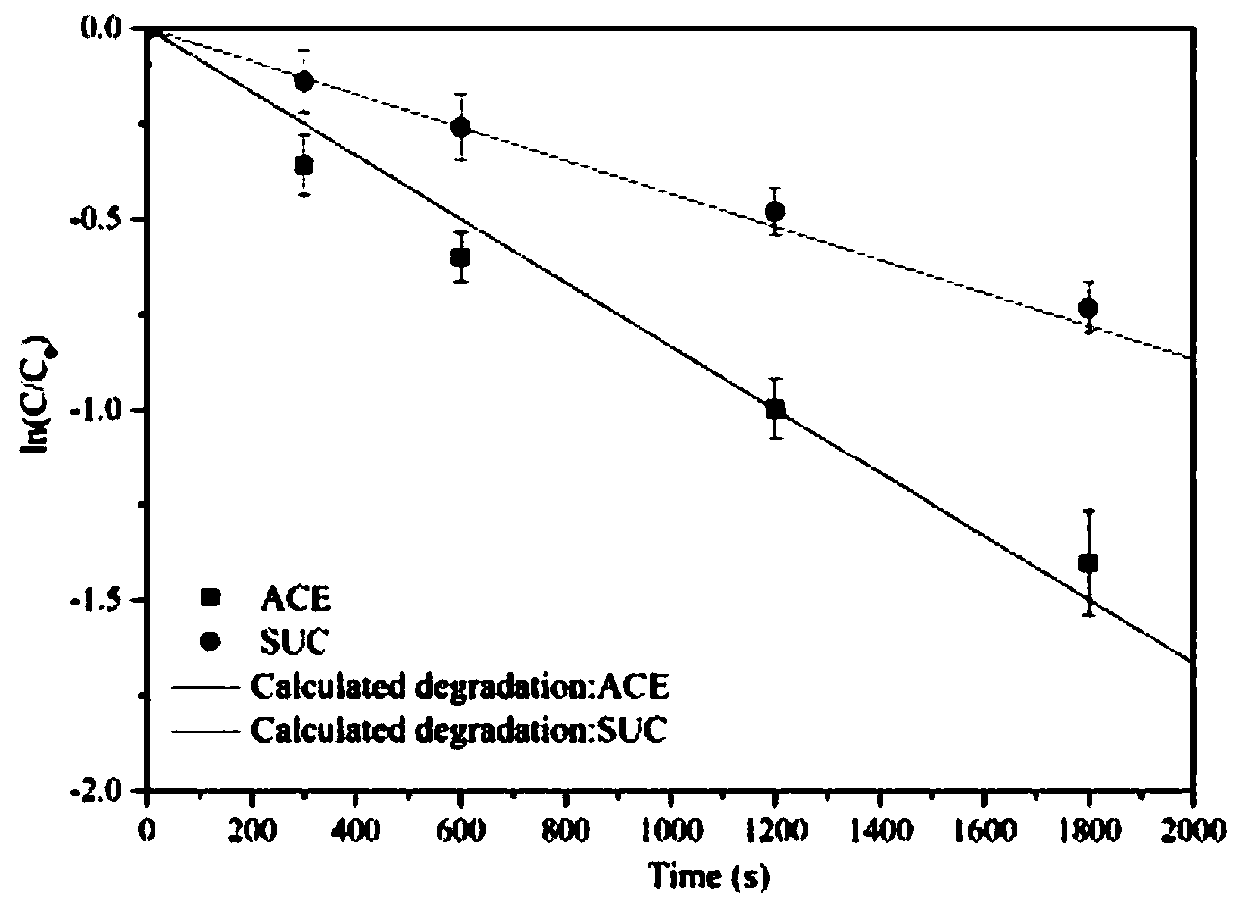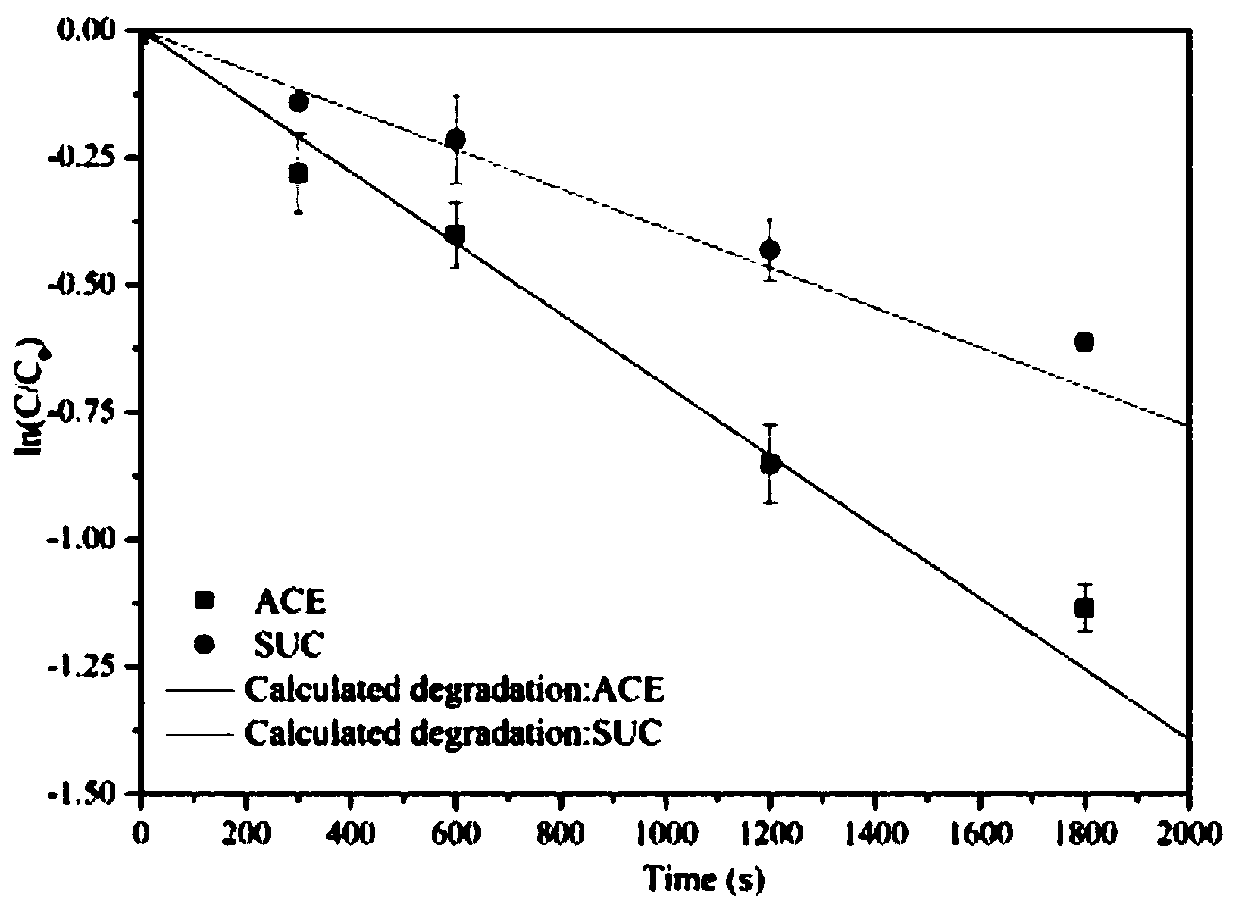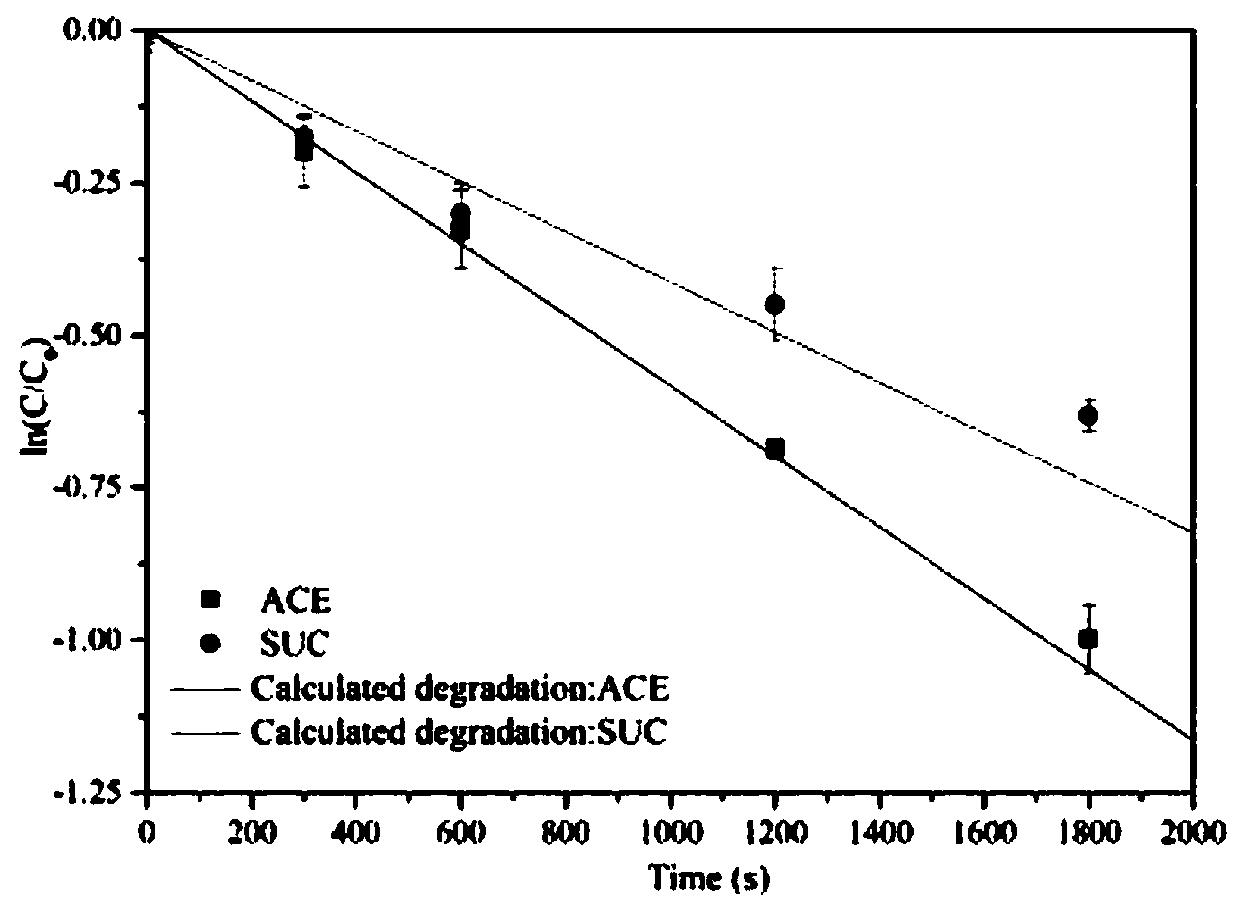Degradation prediction method for removing micro-pollutants in secondary effluent by ultraviolet/sodium persulfate
A technology of sodium persulfate and secondary effluent, applied in the fields of water pollutants, chemical instruments and methods, light water/sewage treatment, etc., can solve the problems of unknown degradation effect of various organic substances, reduce the cost of small test and ensure uniformity sexual effect
- Summary
- Abstract
- Description
- Claims
- Application Information
AI Technical Summary
Problems solved by technology
Method used
Image
Examples
Embodiment 1
[0035] The following example selects acesulfame potassium (ACE) and sucralose (SUC) in artificial sweeteners as the target pollutants, and illustrates the establishment of the degradation model of ACE and SUC in the UV / PS removal secondary effluent.
[0036] A method for predicting the degradation of micropollutants in secondary effluent water by ultraviolet / sodium persulfate, comprising the following steps:
[0037] S1: Taking p-chlorobenzoic acid (pCBA) and naproxen (NPX) as reference substances, based on UV / PS Based on the reaction mechanism of pCBA and NPX, the apparent reaction rate constants of pCBA and NPX are used as independent variables, respectively designed at high, medium and low levels of concentration, and the experimental program is designed using a kinetic model. The entire design has multiple test points;
[0038] S2: According to the experimental plan designed by the kinetic model, take the effluent from the secondary sedimentation tank of 3 domestic sewage tr...
Embodiment 2
[0056] The difference from Example 1 is that the photoreactor in step S2 mainly includes a frame body 1, a quartz glass tube 2, an ultrasonic probe 3, an electromagnetic stirrer 4, and a power supply. The top of the frame body 1 is provided with a return channel 11, and the return channel Screening grid 12 is arranged in the horizontal direction in 11, rotating nozzles 13 are evenly distributed at the lower end of return channel 11, spiral return pipe 14 is provided on the left and right sides of the outer wall of frame body 1, and the liquid inlet of spiral return pipe 14 is connected with frame body 1 The lower end is connected, and the liquid outlet of the spiral return pipe 14 is connected with the return channel 11. The quartz glass tube 2 has a spiral structure, and there are three quartz glass tubes 2, which are evenly distributed inside the frame body 1. There is an ultraviolet mercury lamp inside the quartz glass tube 2. Rod 21; the vertical middle part of frame body 1...
PUM
 Login to View More
Login to View More Abstract
Description
Claims
Application Information
 Login to View More
Login to View More - R&D
- Intellectual Property
- Life Sciences
- Materials
- Tech Scout
- Unparalleled Data Quality
- Higher Quality Content
- 60% Fewer Hallucinations
Browse by: Latest US Patents, China's latest patents, Technical Efficacy Thesaurus, Application Domain, Technology Topic, Popular Technical Reports.
© 2025 PatSnap. All rights reserved.Legal|Privacy policy|Modern Slavery Act Transparency Statement|Sitemap|About US| Contact US: help@patsnap.com



